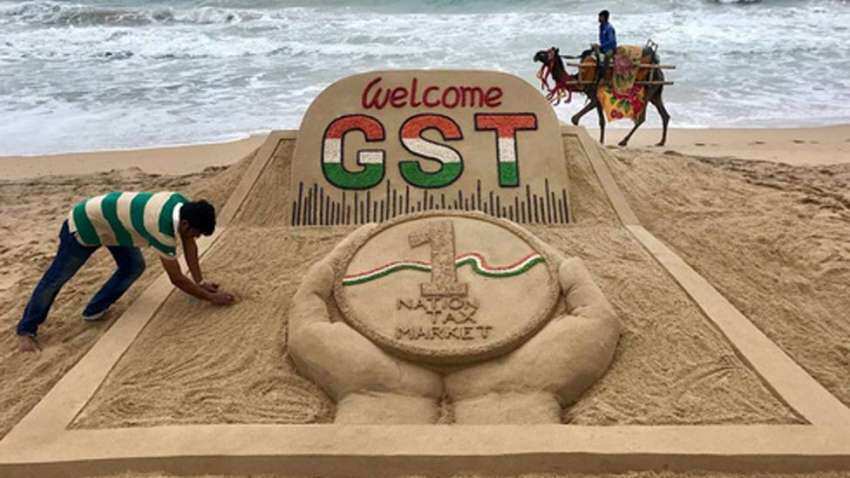One year of GST: Impact on common man
Single and transparent tax proportionate to the value of goods and services: Due to multiple indirect taxes being levied by the Centre and State, with incomplete or no input tax credits available at progressive stages of value addition, the cost of most goods and services in the country today are laden with many hidden taxes. Under GST, there would be only one tax from the manufacturer to the consumer, leading to a transparency of taxes paid to the final consumer.

The Goods and Services Tax (GST), which was rolled out on July 1, 2017, completes a year today. Several products that were initially added under the tax regime are no longer a part of it, again some of which were not under it have been added under GST in this past one year. Alongside, some items which used to a part of the higher tax bracket have been moved to the lower one also.
GST: A brief look
(i) Reduction in prices of goods and services due to the elimination of cascading
(ii) Uniform prices throughout the country
(iii) Transparency in the taxation system
(iv) Increase in employment opportunities
Single and transparent tax proportionate to the value of goods and services: Due to multiple indirect taxes being levied by the Centre and State, with incomplete or no input tax credits available at progressive stages of value addition, the cost of most goods and services in the country today are laden with many hidden taxes. Under GST, there would be only one tax from the manufacturer to the consumer, leading to a transparency of taxes paid to the final consumer.
Relief in overall tax burden: Because of efficiency gains and prevention of leakages, the overall tax burden on most commodities will come down, which will benefit consumers.
The main objective of the GST implementation in the country was to bring all the indirect taxes and services under one single integrated tax. Let's have a look on how it has affected the citizens of the country.
According to a survey by LocalCircles, only 21 per cent of the over 32,000 people in 215 districts of India said that their monthly household grocery bills had reduced after the GST implementation while 63 per cent disagreed on this count.
In the first poll, respondents were asked if their monthly household grocery bills had reduced due to GST which was implemented a year ago. "Only 21 per cent agreed while 63 per cent didn't. Sixteen per cent were unsure," the survey said.
In November 2017, the GST rate for restaurants was reduced from 18 per cent to five per cent. 28 per cent of the citizen said that after the implementation of GST the restaurant bill had come down, while 57 per cent said that it’s still the same. Another 15 per cent respondents were unsure on this count.
The survey said that only 15 per cent consumers felt that businesses were passing the benefits of Input Tax Credit under the GST regime to them. It said 61 per cent felt it was not happening while 24 per cent were not sure.
A total of 39 per cent respondents said that they have been charged GST on discounted price once or more while shopping online or in retail stores in the last three months. Twenty nine per cent said it had not happened to them while 32 per cent were not sure.
WATCH THIS ZEE BUSINESS VIDEO HERE:
Impact on cost of services (mobile, movie tickets etc)
54 per cent said it had increased, 14 per cent said it had decreased, whereas 19 per cent said it was the same as before. A total of 13 per cent respondents said they were unsure.
On the other hand if, petrol and diesel are brought under GST, it will involve a peak tax rate of 28 per cent plus states getting to levy some tax, keeping the retail rates at almost the same level as they are currently, according to Bihar Deputy Chief Minister Sushil Kumar Modi. He, however, said it will take some time for states to get around to including petrol and diesel in the GST and the Council will take a final call on the timing.
12:51 PM IST






 Budget Expectations 2019: Anand Mahindra says lowering GST on automobiles would help economy, employment
Budget Expectations 2019: Anand Mahindra says lowering GST on automobiles would help economy, employment Looking to buy a house? Wait! GST on residential properties likely to be slashed
Looking to buy a house? Wait! GST on residential properties likely to be slashed Realtors give up on Budget 2019 saying FM will woo voters, not industry
Realtors give up on Budget 2019 saying FM will woo voters, not industry GST Council forms GoM on real estate tax rate
GST Council forms GoM on real estate tax rate Telugu star Mahesh Babu's Axis Bank, ICICI Bank accounts frozen after GST dept crackdown
Telugu star Mahesh Babu's Axis Bank, ICICI Bank accounts frozen after GST dept crackdown